My friend Darren and I took two trips to the Bow Summit area to do some astrophotography. Darren’s nighttime landscape photos have won awards and have been published in magazines. Darren has been mentoring me on his astrophotography workflow, so I jumped at the opportunity to go out and shoot with him.
Bow Summit is about 40 km north of Lake Louise along the Icefields Parkway. There is no powerline along the Icefields Parkway, so no streetlights or light pollution – just dark. Dark skies are a key ingredient for astrophotography.
We decided to camp out so as to avoid a long drive back in the dark at ungodly hours. We snagged at campsite at Mosquito Creek. By 11:00 am we had our tent set up, and with 8 more hours until darkness we decided to explore some short, scenic hikes to do some photography.
Hector Lake
Hector Lake delivers on the low-effort to high-reward front. From an unsigned pullout at the side of the road, an eroded trail leads through lush forest down to the Bow River. At the river’s edge there are some wonderful views towards Little Hector.

Looking towards The Pulpit.

The baby Bow River – the same river that flows through Calgary.

Darren finds a spot to take some photos.
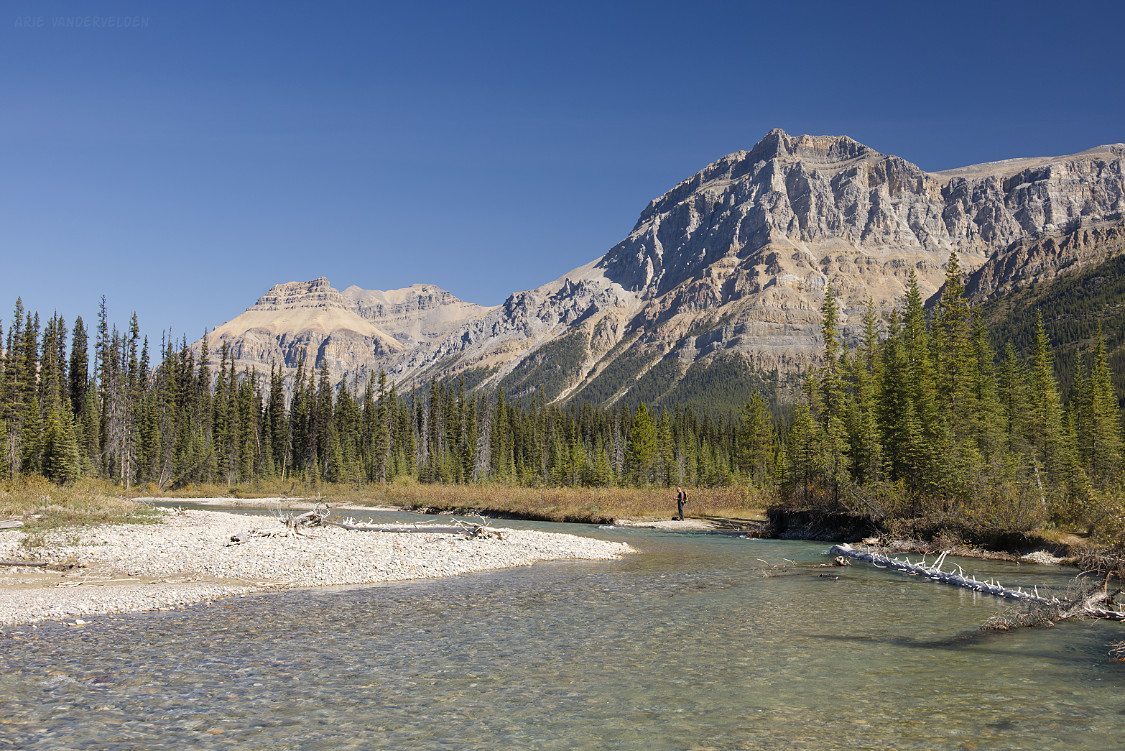
Many hikes in Banff that go to a lake end up at a bushy lakeshore with limited views. Not so at Hector Lake. Extensive gravel flats at the mouth of the Bow River allow for extensive views of the surroundings.
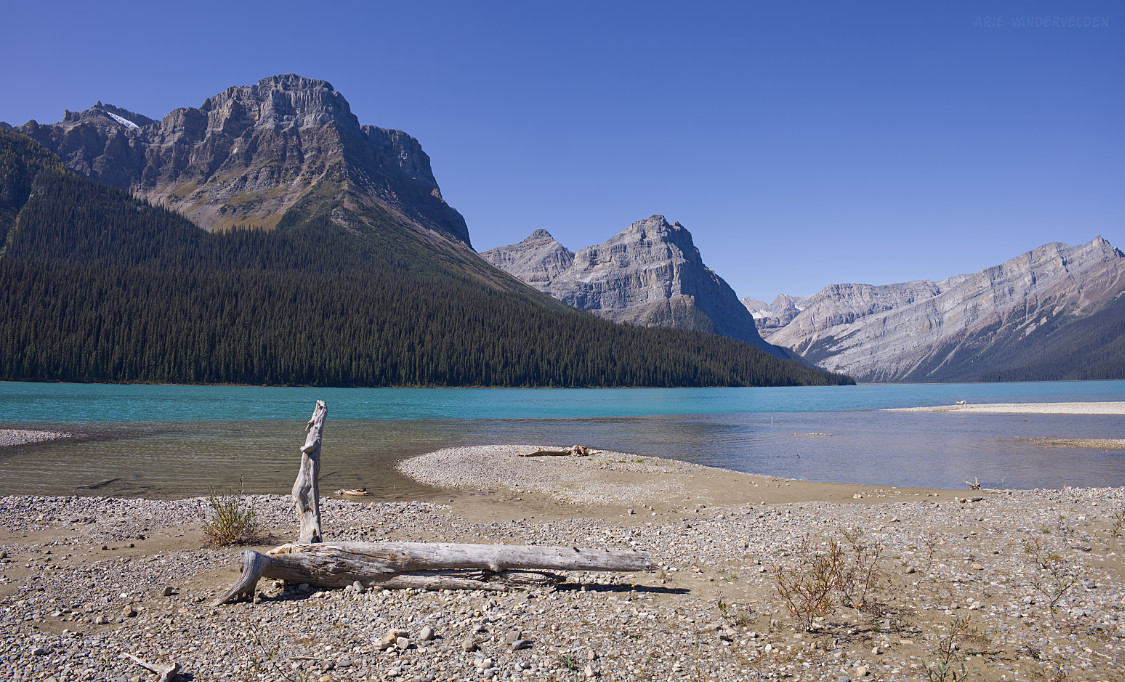
Darren hikes the shoreline of Hector Lake.
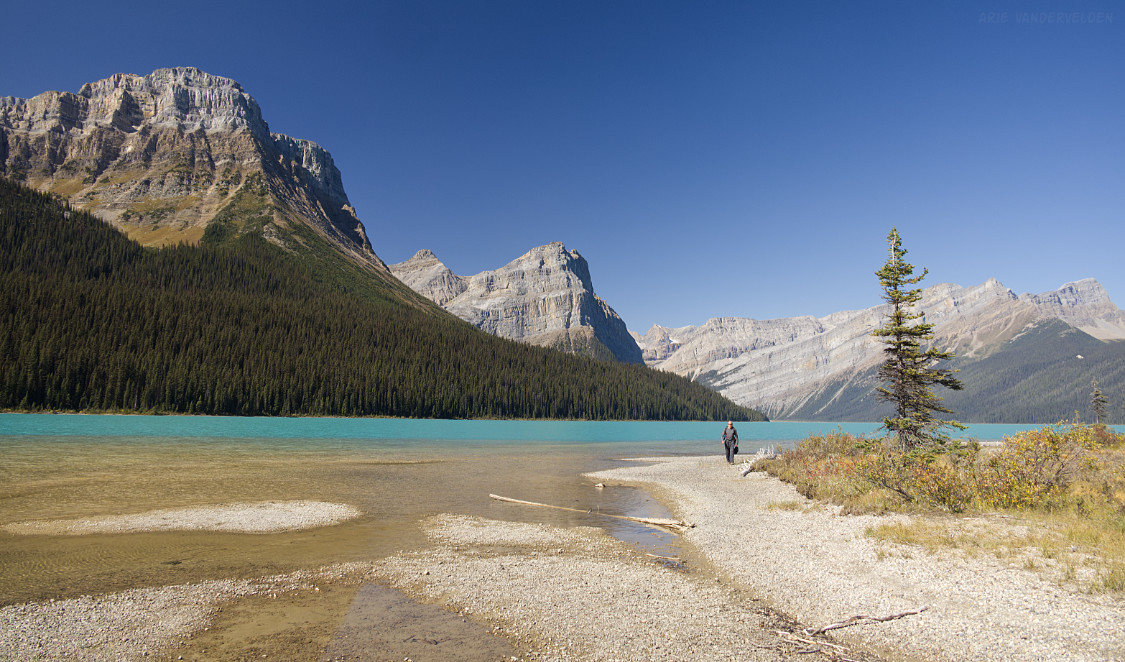
Bow Glacier Falls and Iceberg Lake
Bow Glacier Falls is a popular hike – and for a good reason. Within a short distance the hike skirts a pretty lake, goes past a roaring canyon, and ends up at a thundering waterfall. The crux of the hike is getting a spot in the parking lot – a crowded and chaotic place. Within a few hundred meters, though, we left the crowds behind.
At the Bow Lake shoreline we scoped out sites for night photography. The next photo approximates the location we used, but I took this photo in 2018. The mountain in the center of the photo is Crowfoot Mountain. Bow Glacier Falls is visible in the distance as a little white stripe.
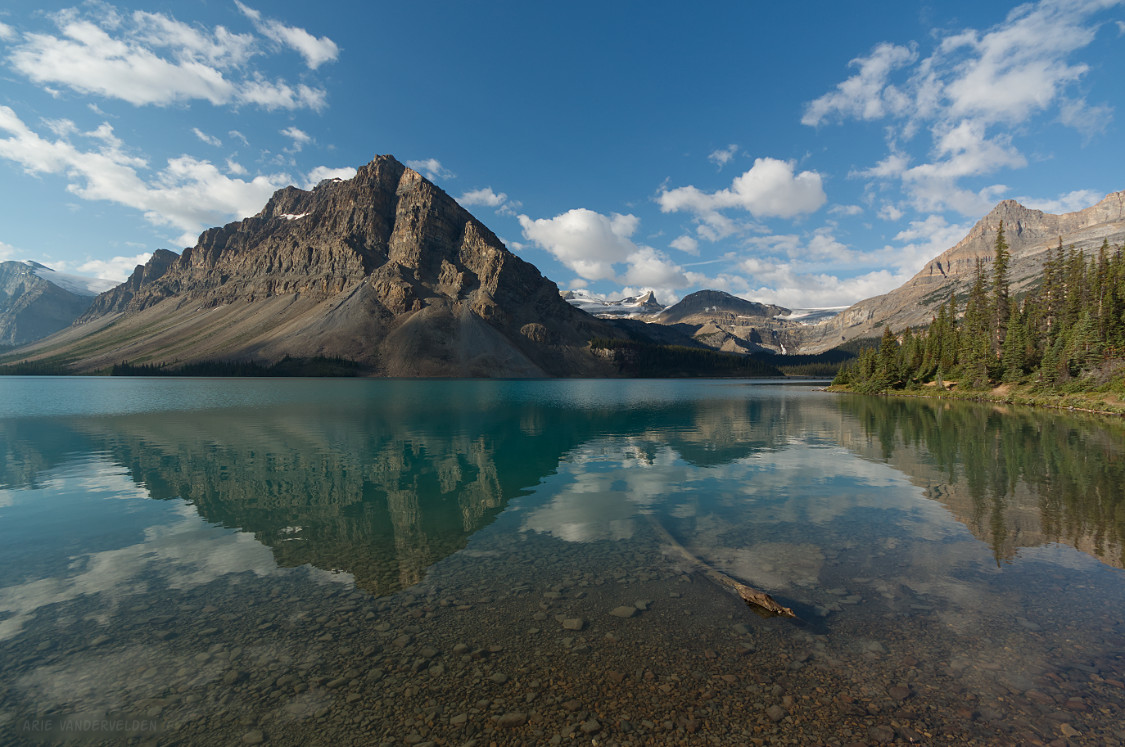
Past the lakeshore, the trail follows the infant Bow River upstream.

Canyon.
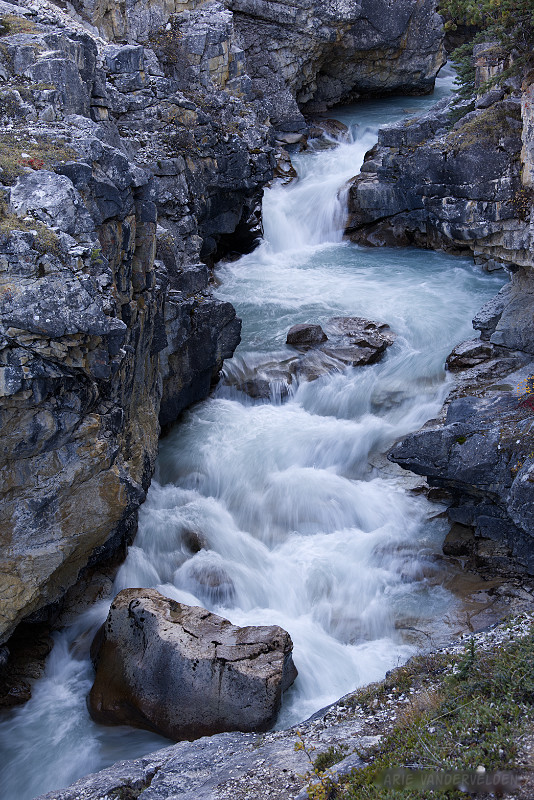
We had a late lunch at Bow Glacier Falls. By the time we got there the sun was directly behind the falls. Here is a 2018 photo of the falls with better light.
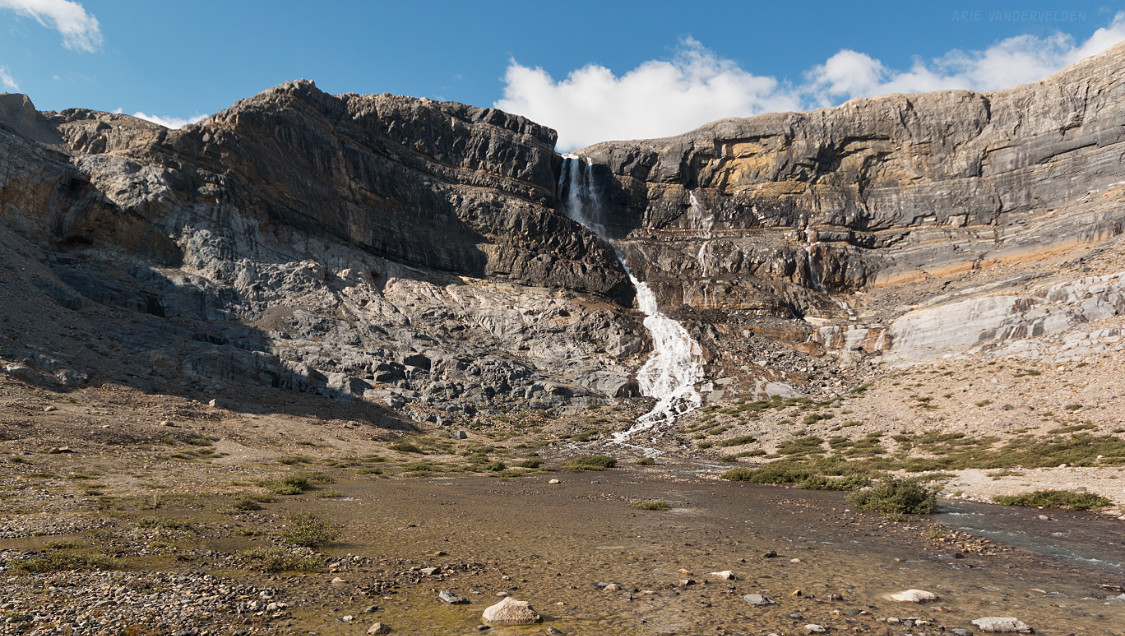
While munching on our lunches, we looked for ways to get up to the top of the falls. Tacking the cliffs directly looked way to steep. But on the left were some trees where we found some ledges and breaks, allowing us to scramble up. Here, Darren is scrambling up a knife-edge moraine, with Bow Lake in behind.

At the top is Iceberg Lake, with Bow Glacier and Portal Peak completing the scenery.
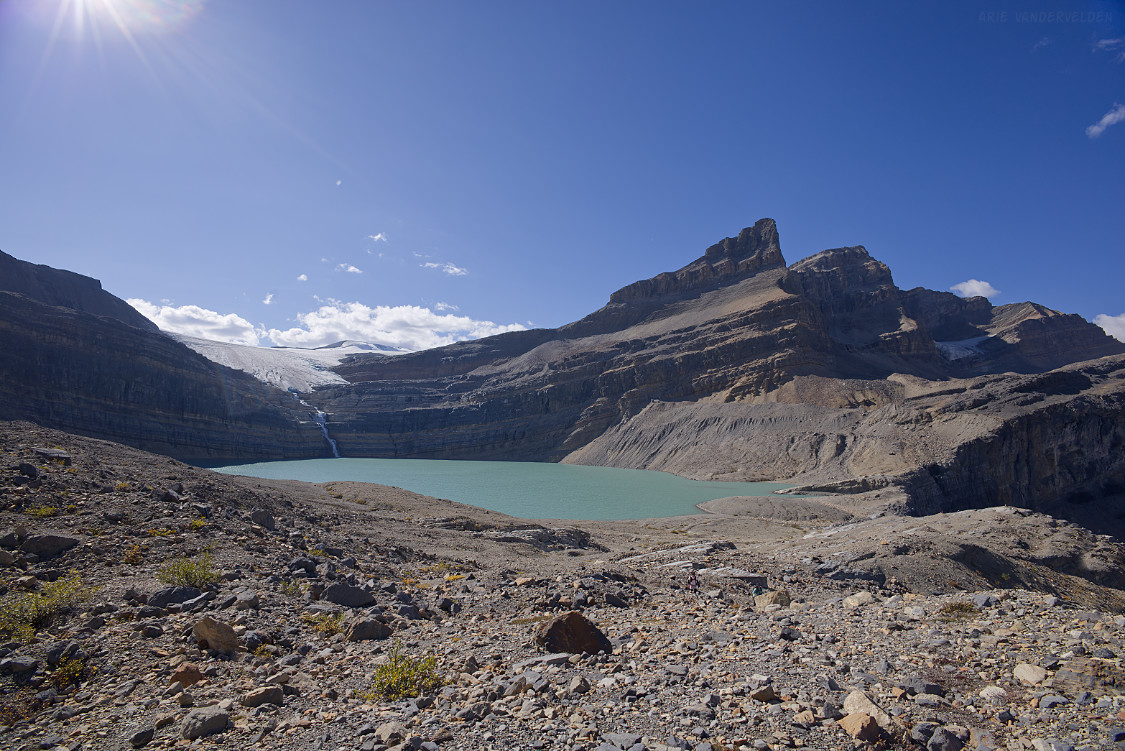
At the outlet of Iceberg Lake, the Bow River rips through a short canyon before blasting off the cliff into the void. Darren checks out the terrific drop below.
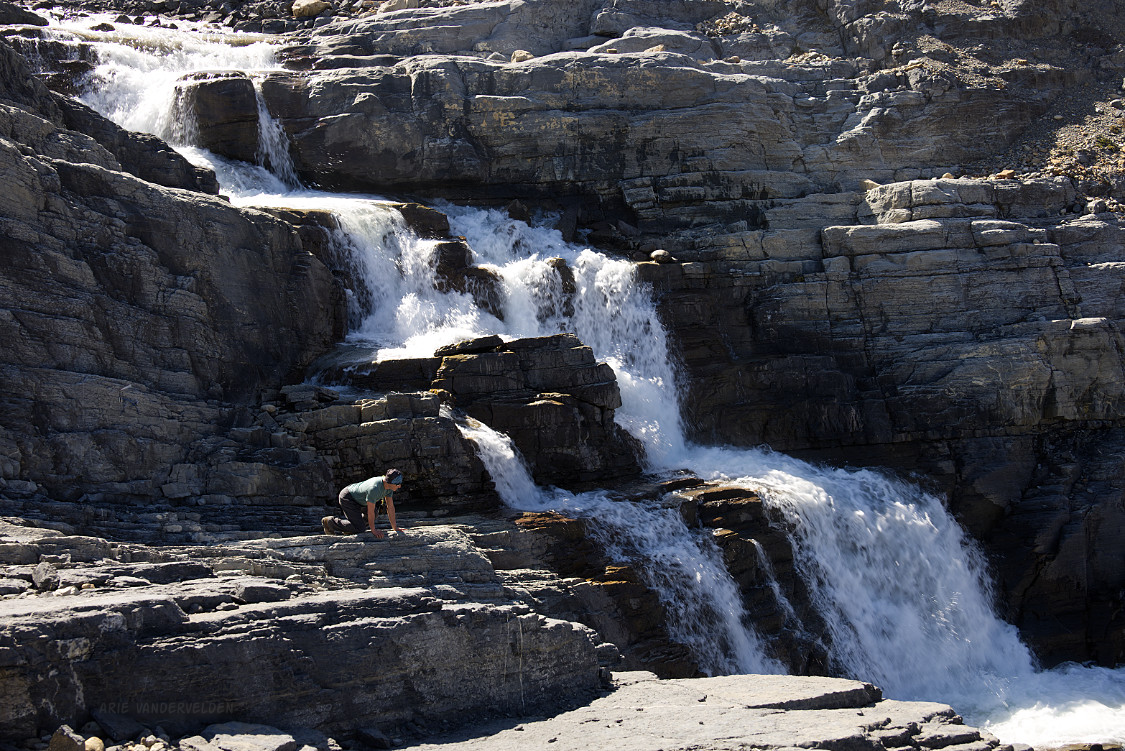
The Bow Glacier has retreated, and does not flow into Iceberg Lake anymore. So, no more icebergs in Iceberg Lake. Now there is an upper waterfall.
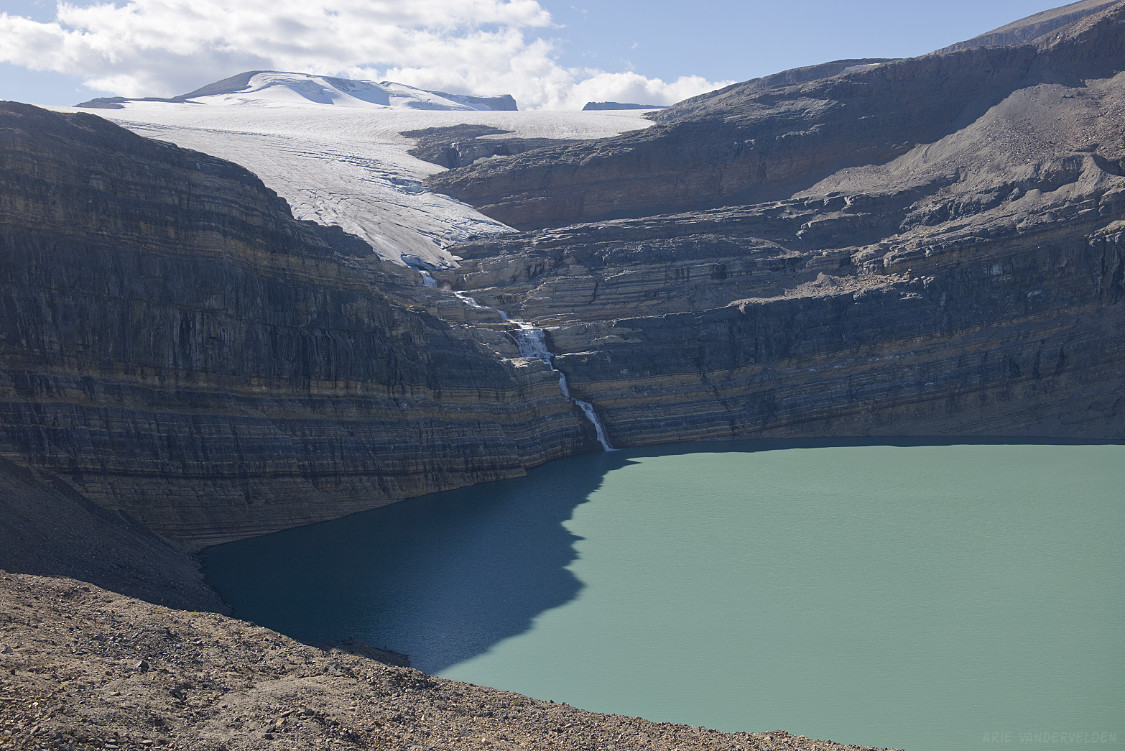
One last look at Iceberg Lake.
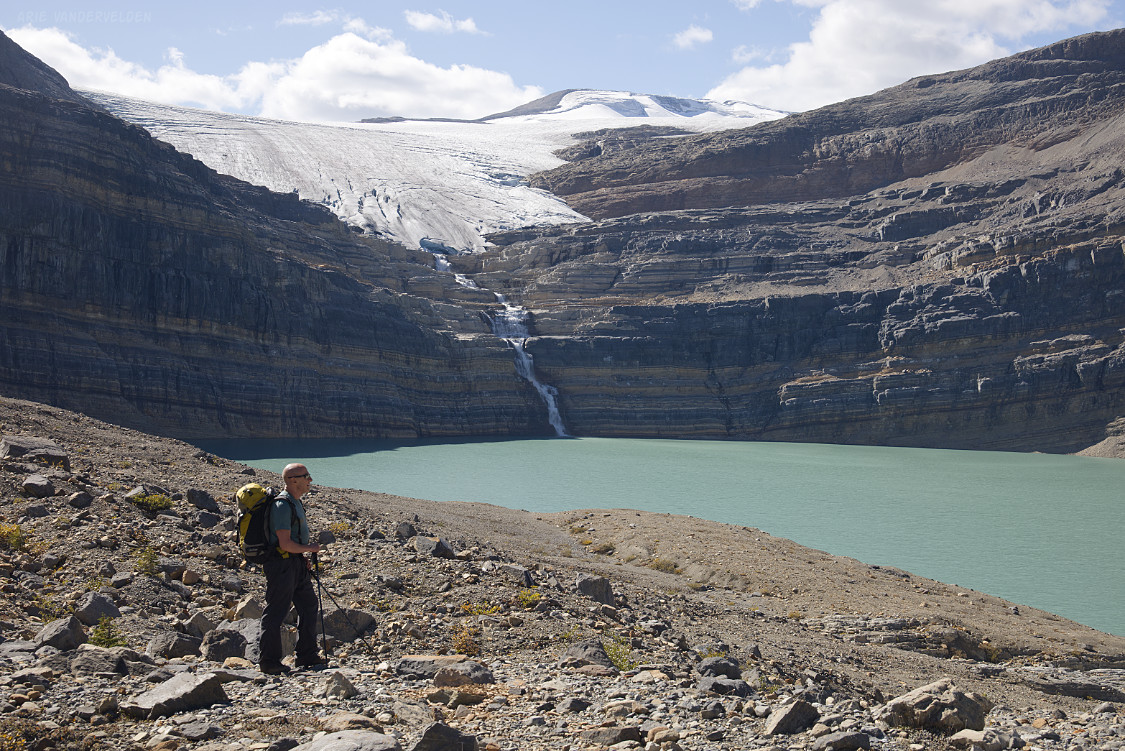
Bow Lake at night
After our hike to Bow Glacier Falls we drove back to the campsite, cooked dinner, and got our astrophotography gear ready. We lounged around until the stars came out, and then drove back once more to Bow Lake. Over the next few hours we shot frames, which I compiled into the following image.
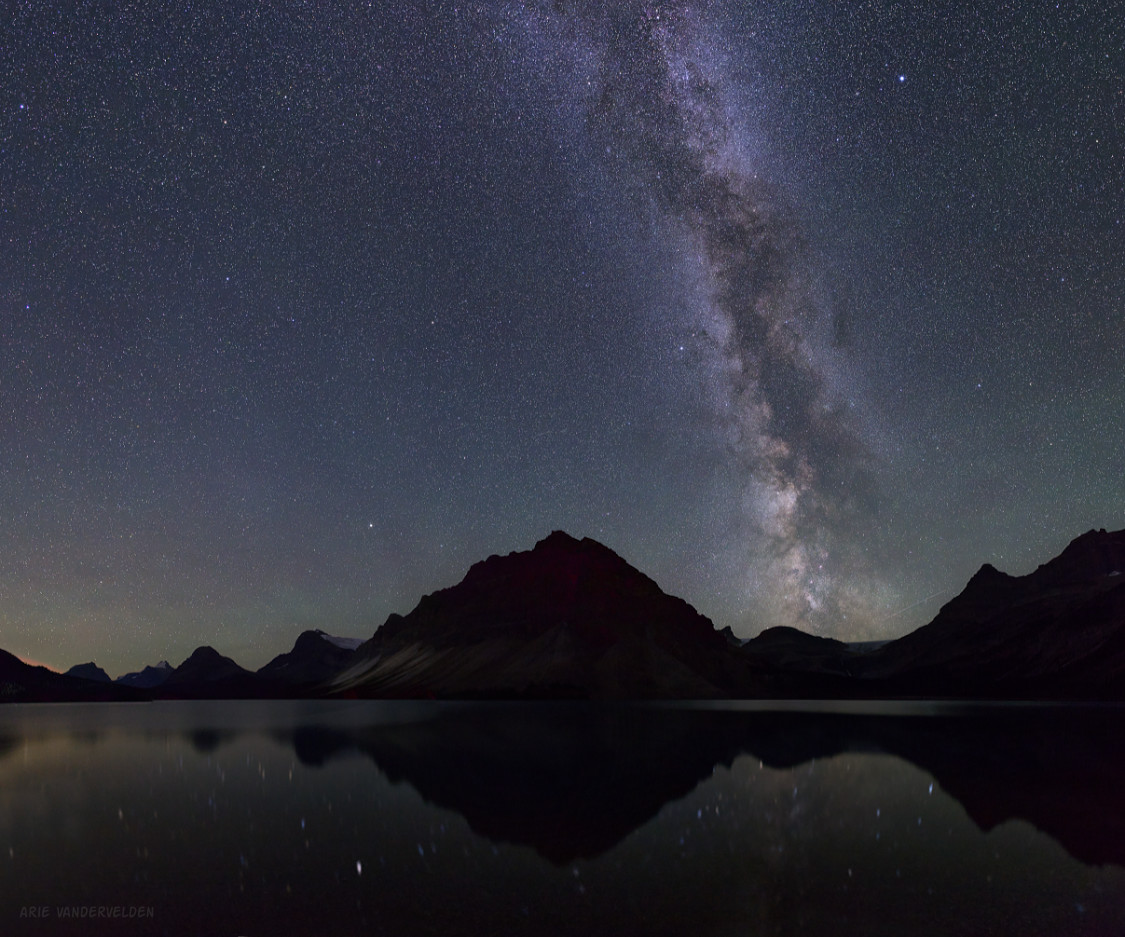
Here is an annotated version. On the top left are Alpheratz, Scheat, Algenib, and Markab, four stars which form the square of Pegasus. The constellation of Pegasus is most readily viewed in autumn. Red-giant star Enif is also a part of Pegasus. Below Enif, Saturn shone brightly in the night sky.
Vega is one of the brightest stars in the sky and is in the constellation Lyra. Altair is also a very prominent star and is in the constellation Aquila, the eagle. Together, Vega and Altair are two corners of the “summer triangle”. The third star of the summer triangle is Deneb, which is in the Milky Way just above the frame. As fall progresses, the summer triangle sets earlier and earlier. Rasalhague is the brightest star in the constellation Ophiuchus, the serpent-bearer.
The star of the show, of course, is the Milky Way, the spiral galaxy that’s our home. The bright area near the horizon is the galactic center. The back band running through the middle of the Milky Way is called the Great Rift, which is thought to be caused by interstellar dust blocking light from stars behind it.

My original image is about 10,000 by 10,000 pixels, and contains a lot of fine detail that’s hard to show in a web-sized image. Here is a crop of the image shown above.

At half past midnight we drove back to Mosquito Creek campground. Just outside the campground I set up my rig one more time and captured this image of Mosquito Creek and Bow Peak.
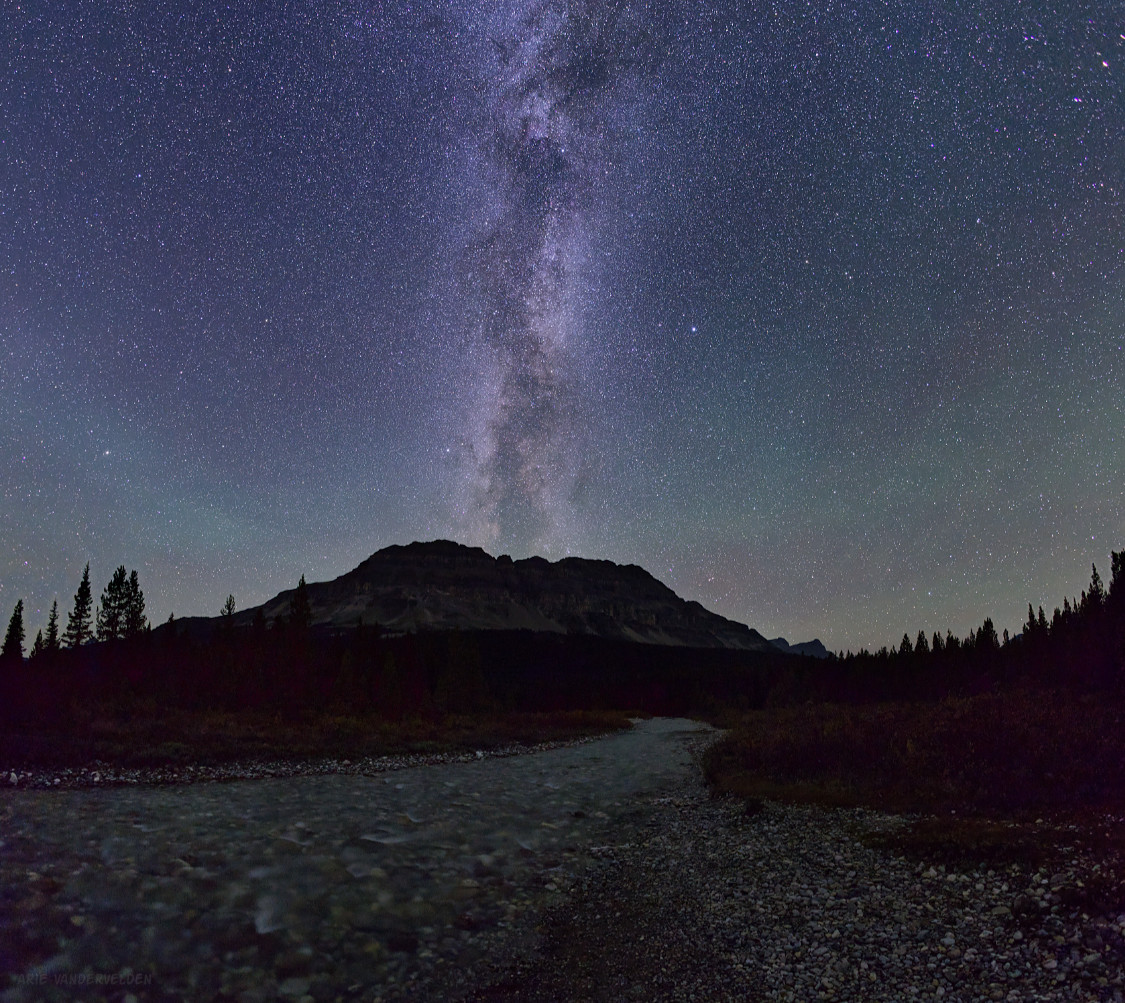
By now it was after 2 am, and everything was starting to get covered in dew including my lens. I packed up and crawled into my tent to find my air mattress fully deflated. My electric inflator, which plugs into the car’s 12 volt outlet, is really loud and I just couldn’t run it in the middle of the night in a packed campground. So I inflated the darn thing by mouth. That took a while.
Crowfoot Meadows
On Wednesday Darren called me up: “There is another high-pressure system coming. It’s going to be clear as a bell. Are you up for another shoot?” Twist my rubber arm… Once again we set up at Mosquito Creek Campground by late morning, and once again we tried to find some short and scenic hikes for photography.
We drove up the road a ways and pulled off at the Crowfoot Glacier viewpoint. The roadside view is lousy, with trees blocking the way. We bushwhacked for a short distance to an open meadow where beautiful fall colors greeted us.

At the end of the meadow are a chain of lakes, connected by the infant Bow River.
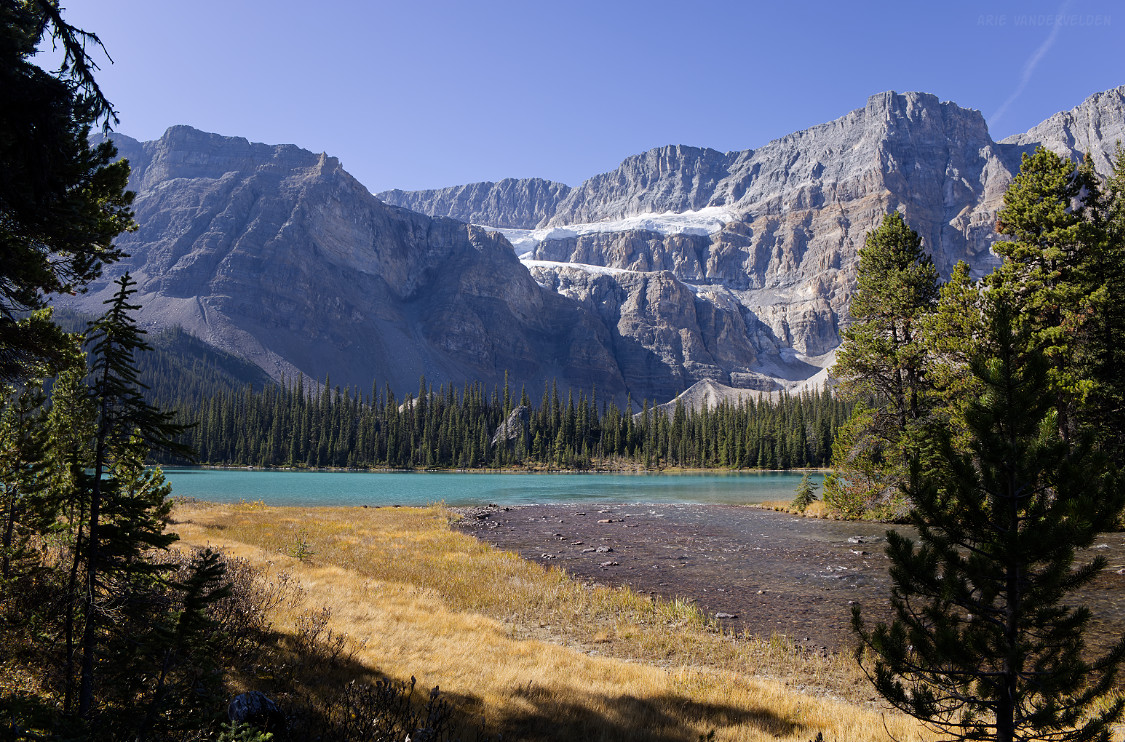
There are only two branches left of Crowfoot Glacier. Once upon a time there was a third branch flowing down the headwall to the moraines below. The three branches resembled a crow’s foot, so this is how the mountain got its name.
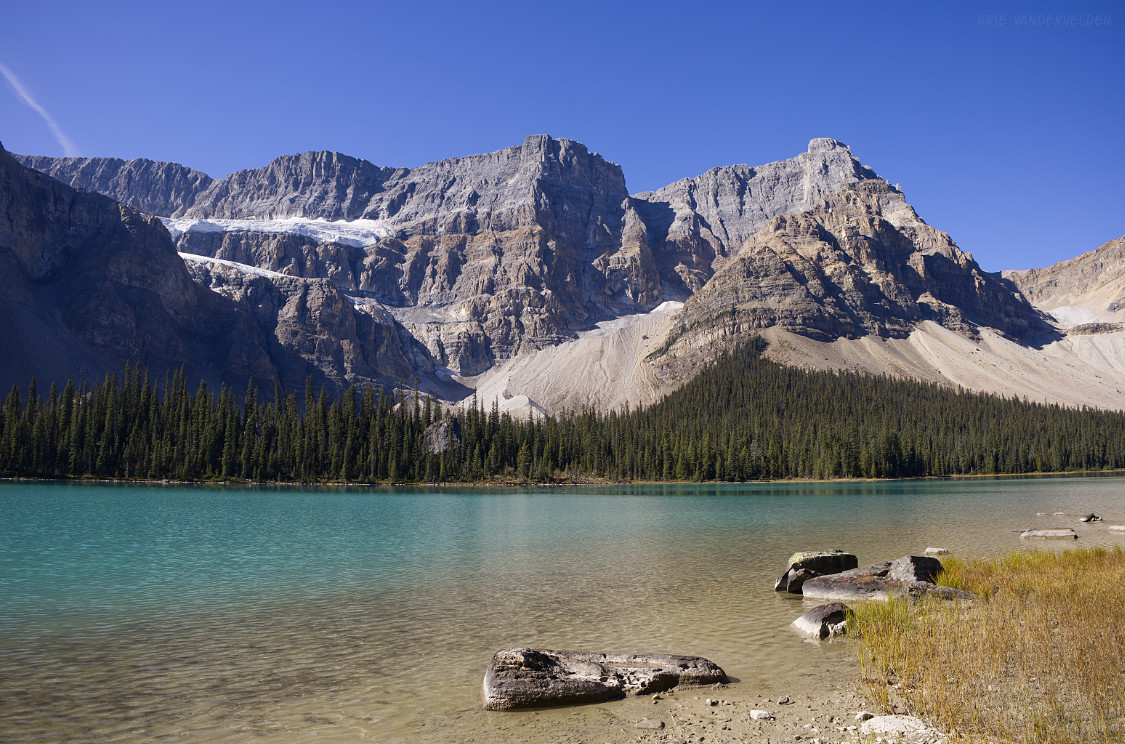
As we hiked back, I spotted a something brown along the shoreline of the upper lake. It was a cow moose with a calf in tow. They crossed the lake just as we were ready to shoot. Some kayakers on the lake got a front-row seat.

The cow and calf trotted off into the bush, and we put down our cameras thinking the show was over. Just then, a bullmoose came charging out of the bushes on the opposite bank and crossed the lake as well.

It was a very Canadian moment. Darren and I looked at each other and said: “No way we’re coming back here at night, with a grumpy moose the size of a minivan lurking in the bushes.”

Upper Waterfowl Lake
I was keen to shoot a nightscape at Waterfowl Lakes, so we had a look during the daytime. We found a very pretty spot for our shoot.
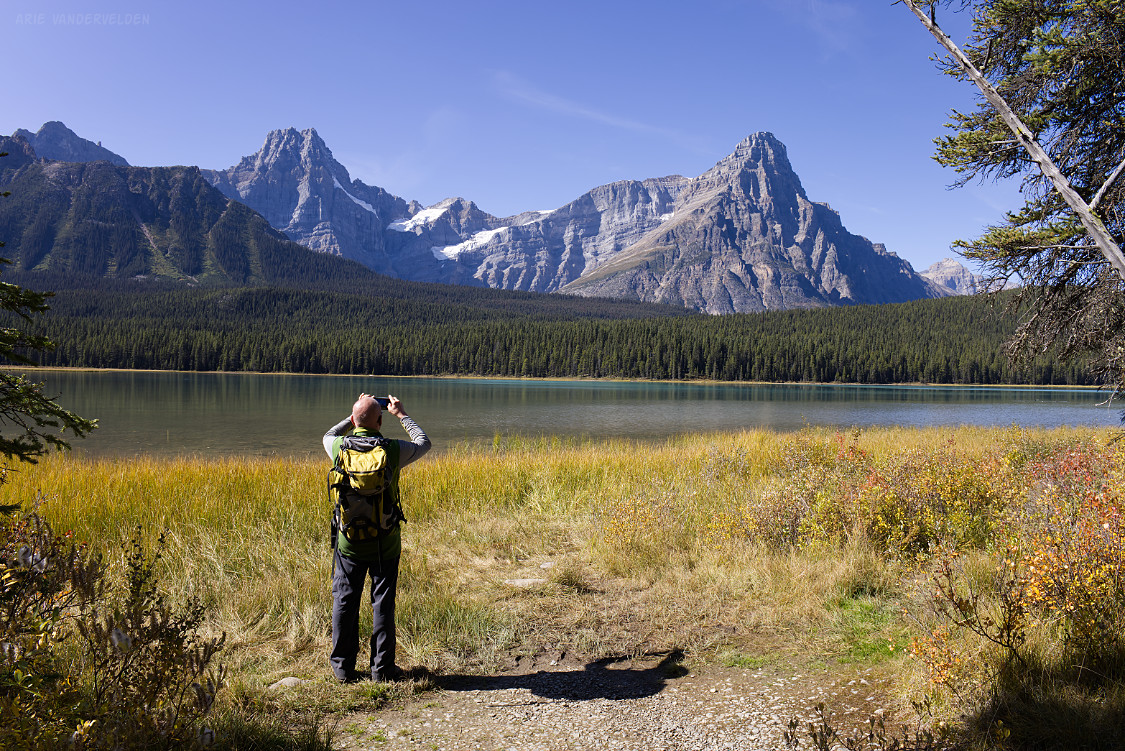
The mountain on the right is called Mount Chephren, and the one on the left is Howse Peak.
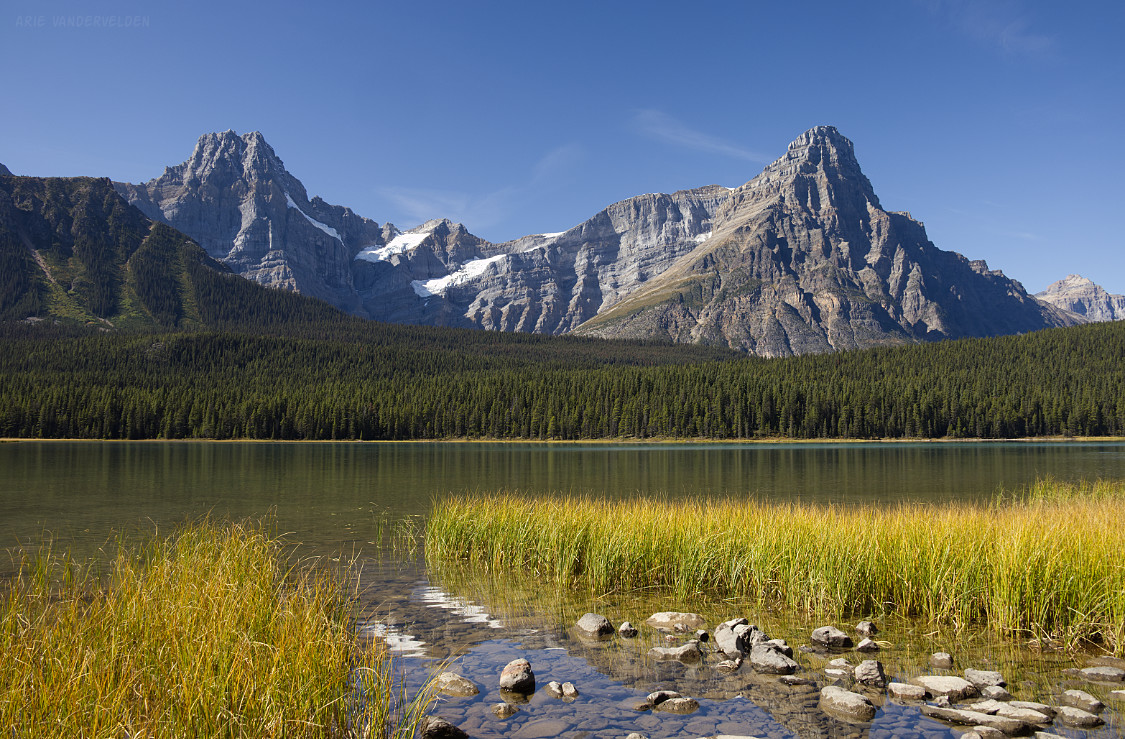
Peyto Lake
One of the most popular stops long the Icefields Parkway is the Peyto Lake viewpoint. From a huge parking lot, a short interpretive trail leads to a classic viewpoint of cyan-colored Peyto Lake. Rather than join the crowds on the interpretive trail, we decided to hike up through the forest to treeline. There, we booted up some short scree slopes. Below some cliffs we called it a day, and pulled out our cameras.
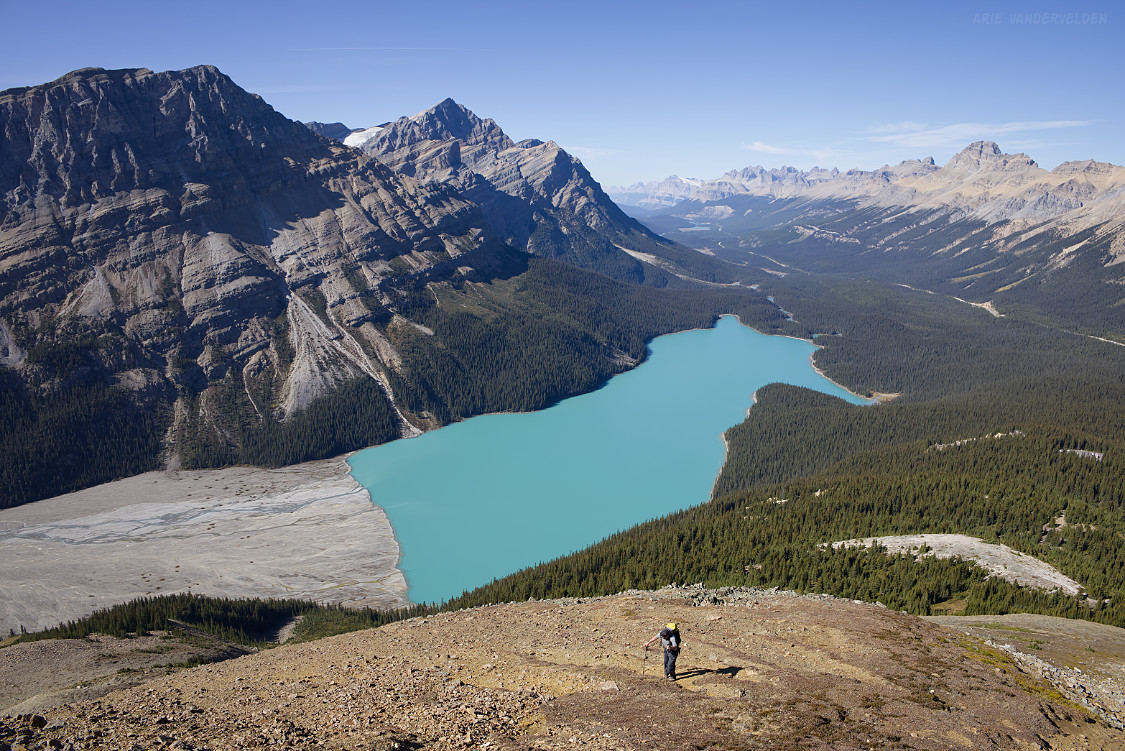
We had a late lunch and enjoyed the peace and quiet of our surroundings. And we took lots of photos, of course.

Waterfowl Lakes at night
After our Peyto Lake shoot we headed back to camp for dinner and relaxed. At Twilight we drove back to Waterfowl Lakes and set up our gear. Having done a night shoot less than a week ago, I had had the opportunity to look through some of my files, which got me thinking about ways to improve my shooting technique. In any case, I’m pretty happy with the result. Things came together, and I think I managed to capture what I saw that night.

